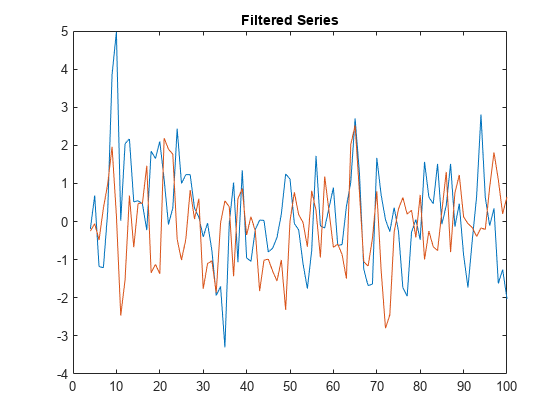LagOp
Create lag operator polynomial
Description
Create a p-degree, m-dimensional lag operator polynomial A(L) = A0 + A1L1 + A2L2 +...+ ApLp by specifying the coefficient matrices A0,…,Ap and, optionally, the corresponding lags. L is the lag (or backshift) operator such that Ljyt = yt–j.
LagOp
object functions enable you to work with specified polynomials. For example, you can filter time series data through a polynomial, determine whether one is stable, or combine multiple polynomials by performing polynomial algebra including addition, subtraction, multiplication, and division.
To fit a dynamic model containing lag operator polynomials to data, create the appropriate model object, and then fit it to the data. For univariate models, see arima and estimate; for multivariate models, see varm and estimate. For further analysis, you can create a LagOp object from the resulting estimated coefficients.
Creation
Description
A = LagOp(coefficients)A with coefficients coefficients, and sets the Coefficients property.
A = LagOp(coefficients,Name,Value)LagOp(coefficients,'Lags',[0 4 8],'Tolerance',1e-10) associates the coefficients to lags 0, 4, and 8, and sets the lag inclusion tolerance to 1e-10.
Input Arguments
Name-Value Arguments
Properties
Object Functions
filter | Apply lag operator polynomial to filter time series |
isEqLagOp | Determine if two LagOp objects are same
mathematical polynomial |
isNonZero | Find lags associated with nonzero coefficients of LagOp objects |
isStable | Determine stability of lag operator polynomial |
minus | Lag operator polynomial subtraction |
mldivide | Apply left division to lag operator polynomials |
mrdivide | Lag operator polynomial right division |
mtimes | Lag operator polynomial multiplication |
plus | Lag operator polynomial addition |
reflect | Reflect lag operator polynomial coefficients around lag zero |
toCellArray | Convert lag operator polynomial object to cell array |
Examples
Version History
Introduced in R2010a
